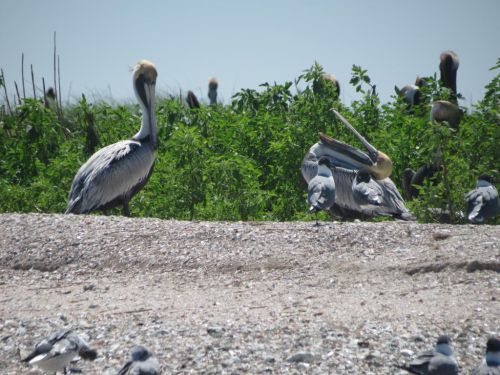Reforming La. education like pulling teeth
May 13, 2014Leeville $1.1M public boat launch construction begins
May 13, 2014The official estimates of the Deepwater Horizon oil spill’s effect on birds have not yet been published, although the numbers are waiting in the wings.
But a study done for attorneys on the Plantiff’s Steering Committee – performed by a long-time NOAA scientist – provides estimates of bird mortality far higher than has publicly been discussed.
The report, to be published in the Marine Ecology Project Series, estimates as many as 800,000 seabirds were lost as a result of the spill, which occurred on April 20, 2010.
Winds, sea currents and other factors, the journal report states, have resulted in prior under-reporting. The new estimates, the report says, take those factors into account.
Dr. Jeffery Short, who worked with NOAA for 30 years, briefly worked for the conservation group Oceana and more recently undertook research funded by attorneys representing plaintiffs who have sued BP, the official responsible party for the spill.
BP disputes the report, questioning its reliability.
“This paper was funded by plaintiffs’ lawyers who’ve been unsuccessful in their efforts to bring wildlife-related claims against BP, and the lead author himself works for an organization that has also been unsuccessful in its efforts to sue BP over purported wildlife impacts,” BP spokesman Jason Ryan said in a statement released by the oil company. “The results of the models used in this paper are based on general assumptions by the authors.”
The Natural Resource Damage Assessment process, Ryan said, is producing data regarding bird mortality that conflicts with the study findings.
“If the authors ran their models with numbers specific to the Deepwater Horizon accident, their estimates would be substantially lower,” Ryan said.
A key component of the report, that only 1 percent of the birds that died at sea washed up ashore, is one of the contentions BP disputes.
“Field studies conducted at the height of the response as part of the NRDA suggest that over 70 percent of birds washed ashore,” Ryan states.
The study surmised that searchers found only 42 percent of large birds and 7 percent of smaller birds.
“In reality, the ability of wildlife collection teams to find those birds was tested during the response, and was found to be 97 percent for large birds, 89 percent for medium-sized birds, and 78 percent for small birds,” Ryan said.
Short has spent much of his government career studying impacts of the Exxon Valdez spill in Alaska. Another report author, Chris Haney, is the chief scientist for Defenders of Wildlife, which has litigated against BP, although up to this point unsuccessfully.
The explosion took place more than 50 miles from land; the search area wildlife rescuers were to cover stretched over 40,000 square miles of ocean.
Graphic photos and video of oiled pelicans, scientists maintain – and Short, in an interview, agrees – were the tip of the avian iceberg. Heavily oiled birds are easier to catch and treat. The big risks, ornithologists said at the time, were to those birds able to fly distances, but who had enough oil on their feather to cause illness or death during preening.
The new report claims that 36 percent of the Gulf of Mexico’s laughing gull population was killed; 15 percent of royal terns, 8 percent of northern gannet and 12 percent of brown pelicans.
The study says the data is confirmed as to laughing gulls by figures from the National Audubon Society’s annual Christmas count, which showed their numbers down by more than 60 percent.
Short and his colleagues also noted that the spill and the months of attempting unsuccessfully to cap it occurred during a time of heavy bird migration, with new birds entering the site during the entire process, rather than there just being a static population.
If anything, Short said, the numbers in the new report would appear to have been underestimated.
The report only concerned itself with near-term bird populations rather than estimating death over the longer term from the spill’s effects.
Ryan maintains on behalf of BP, however, that major rescue efforts were made.
“To minimize potential impact on birds and other wildlife, BP, federal and state agencies and some of the nation’s top wildlife groups launched one of the largest-ever wildlife protection efforts immediately following the accident,” Ryan said. “While NRDA studies are ongoing, analyses of field observations conducted to date indicate that population and nesting impacts from the spill on birds were limited.”










